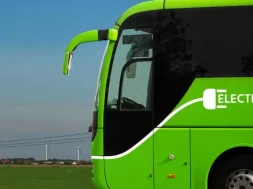
How to Choose an EV to Fit Your Driving Needs – EQ Mag Pro
Electric vehicles (EVs) have changed the car industry. While there are still more Americans driving gasoline-powered vehicles, the EV market is growing as more people aim to reduce waste and their reliance on fossil fuels.
With hundreds of electric car models available, some consumers may find choosing the right vehicle daunting. Learn more about available EV options, how to choose an EV that fits your budget and tips for determining the best EV for your needs.
Learning About Electric Vehicles
There are a variety of reasons people typically consider buying electric vehicles. Some of the most common include helping protect the environment by cutting emissions and oil use, saving money on fuel and maintenance and for their convenience.
An EV is a type of vehicle that runs on electricity. Instead of an internal combustion engine, EVs run with the help of an electric motor. There are three types of EVs: Battery EVs (BEVs), Plug-In Hybrid EVs (PHEVs) and Hybrid EVs (HEVs).
Electric Vehicles vs. Conventional Vehicles
With approximately 370 EV models currently available, choosing the best vehicle for you can be a bit challenging. Additionally, there are various factors you should consider, including cost, maintenance and safety.
Before buying an EV, it is important to understand how it differs from conventional vehicles. Knowing EV types and the benefits and drawbacks of each can help you find the most suitable electric car for your budget and needs.
Types of Electric Vehicles and Their Features
As you try to learn more about EVs, you may stumble upon several abbreviations. Among them are BEVs, PHEVs and HEVs.
These are the three types of electric vehicles — battery electric vehicles (BEVs), plug-in hybrid electric vehicles (PHEVs) and hybrid electric vehicles (HEVs). While all of them use electricity, each has unique features. Before deciding on what type you would purchase, it would help to compare the benefits and drawbacks.
BATTERY ELECTRIC VEHICLES (BEVS)
BEVs are typically what people refer to when talking about electric cars. These are also known as full electric and all-electric. That is because they are exclusively powered by electricity.
BEVs tend to have zero-emission because they do not have any other actuation source aside from the batteries and motors. Compared to other EVs, BEVs have larger capacity batteries.
PLUG-IN HYBRID ELECTRIC VEHICLES (PHEVS)
As the name suggests, a PHEV’s electric battery can be recharged from a plug and combines the use of electric motors and battery packs with an internal combustion engine. Because of this, it allows drivers to switch between using the engine and going full electric. That means the car can still run even if the electric charge is depleted as long as the fuel tank has gasoline.
HYBRID ELECTRIC VEHICLES (HEVS)
Similar to PHEVs, HEVs have an electric motor and a combustion engine. The electric motor and battery packs aim to lessen the consumption of fuel by providing additional power when necessary, such as when accelerating or climbing hills. Depending on the model, an HEV can also run on motor power alone for low-speed driving.
Charging HEVs is done through regenerative braking instead of plugging into a power outlet.
















